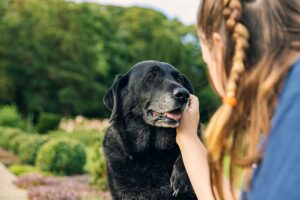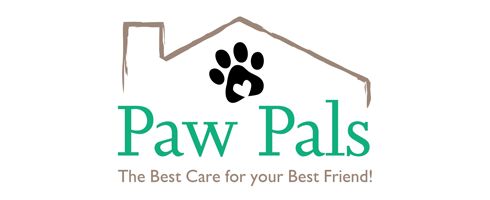 As a pet owner, it’s only natural to grow more and more attached to your dog over time. Our dogs are loyal companions, and they quickly become members of the family. Unfortunately, no one can control the future, and death is an inevitable part of life—both for humans and animals.
As a pet owner, it’s only natural to grow more and more attached to your dog over time. Our dogs are loyal companions, and they quickly become members of the family. Unfortunately, no one can control the future, and death is an inevitable part of life—both for humans and animals.
While it’s difficult to think about, understanding the factors that affect your dog’s lifespan can help ease some of your concerns and allow you to make the most of the time you have together.
The Average Lifespan of a Dog
The lifespan of a dog varies greatly depending on several factors, such as their breed, weight, overall health, and activity level. Just like humans, dogs are individuals, and their lifespans can differ even among dogs of the same breed. However, there are some general guidelines that can help you estimate how long your dog might live.
Factors That Affect a Dog’s Lifespan
Breed-Specific Health Risks
Each dog breed comes with its own set of health risks and vulnerabilities, which can affect their lifespan. For example, Siberian Huskies, while known for their stunning wolf-like appearance, are prone to autoimmune disorders that can lead to more serious issues like cataracts. Bulldogs, with their characteristic squashed noses, often suffer from respiratory problems due to their unique facial structure. Pomeranians, a popular small breed, can experience hair loss due to a condition called alopecia.
Nearly all common dog breeds have their own set of potential health issues. Some breeds are prone to relatively minor concerns like skin infections or ear problems, while others have a higher likelihood of developing more serious conditions such as cancer or diabetes.
Size and Weight
 A dog’s size and weight play a significant role in their overall lifespan. In general, smaller dogs tend to live longer than larger dogs. This is why breeds like terriers, poodles, and Australian Shepherds are often seen as longer-lived compared to larger breeds like Great Danes or Mastiffs. However, it’s important to remember that these are just generalizations, and individual dogs can vary significantly. Mixed-breed dogs, for example, can often be more resilient and live longer than some purebred dogs, thanks to their genetic diversity.
A dog’s size and weight play a significant role in their overall lifespan. In general, smaller dogs tend to live longer than larger dogs. This is why breeds like terriers, poodles, and Australian Shepherds are often seen as longer-lived compared to larger breeds like Great Danes or Mastiffs. However, it’s important to remember that these are just generalizations, and individual dogs can vary significantly. Mixed-breed dogs, for example, can often be more resilient and live longer than some purebred dogs, thanks to their genetic diversity.
Physical Activity
Dogs who lead an active lifestyle, with regular walks, playtime, and mental stimulation, tend to live longer and healthier lives. A dog who gets regular exercise is likely to have a healthier weight, better cardiovascular health, and a more robust immune system compared to a dog that spends most of its time lying around the house or in the backyard.
Average Lifespans by Size and Breed
While every dog is unique, here are some general estimates for the average lifespan of dogs based on their size:
Small Breeds (Under 20 lbs)
Small dogs, like Chihuahuas and Toy Poodles, generally live the longest. On average, they can live between 12 to 16 years, with some small breeds reaching up to 18 years or more.
Medium Breeds (21-50 lbs)
Medium-sized dogs, such as Beagles and Cocker Spaniels, typically have lifespans ranging from 10 to 14 years.
Large Breeds (Over 50 lbs)
Larger dogs, like Labrador Retrievers and German Shepherds, usually live shorter lives, with an average lifespan of 8 to 12 years.
Giant Breeds (Over 90 lbs)
Giant breeds, like Great Danes and Saint Bernards, often have the shortest lifespans, usually living around 6 to 9 years.
Understanding the Dog Years to Human Years Conversion
One of the most common ways people try to relate to their dog’s age is by converting dog years to human years. This helps give pet owners a sense of how old their dog is in human terms. However, the popular notion that one dog year equals seven human years is an oversimplification.
How Dog Years Are Calculated
Dogs age at different rates throughout their lives, with the first year of a dog’s life being the most rapid in terms of development. In fact, the first year of a dog’s life is equivalent to approximately 15 human years. By the time a dog reaches its second year, it has aged to the equivalent of a 24-year-old human. After that, each dog year adds about 4 to 5 human years, depending on the size and breed of the dog.
Here’s a rough breakdown of dog years to human years based on size:
Small Breeds (Under 20 lbs)
A small dog will be roughly 20 years old in human years by the time it reaches age 2, and from there, it ages about 4 human years for every additional dog year. By the time a small dog reaches age 10, it would be about 56 in human years.
Medium Breeds (21-50 lbs)
A medium-sized dog will also be about 20 years old in human years by the age of 2, but it will age slightly faster, gaining about 5 human years for every additional dog year. At age 10, a medium dog would be around 60 human years.
Large Breeds (Over 50 lbs)
Larger dogs tend to age more rapidly. By age 2, a large dog may be the equivalent of a 24-year-old human. For every additional dog year, they age about 6 to 7 human years. By the time a large dog reaches age 10, it would be about 72 in human years.
Giant Breeds (Over 90 lbs)
Giant breeds age even faster. By age 2, they may already be the equivalent of a 30-year-old human. After that, they age 7 to 9 human years for each additional dog year. By age 10, a giant breed might be as old as 90 in human years.
Focusing on Quality of Life
 While it can be helpful to understand how dogs age in comparison to humans, it’s important not to get too caught up in these calculations. The most important thing is ensuring your dog has a high quality of life, no matter their age. Worrying about how much time you have left with your dog can lead to anxiety and prevent you from enjoying the moments you have together.
While it can be helpful to understand how dogs age in comparison to humans, it’s important not to get too caught up in these calculations. The most important thing is ensuring your dog has a high quality of life, no matter their age. Worrying about how much time you have left with your dog can lead to anxiety and prevent you from enjoying the moments you have together.
As a responsible pet owner, focus on providing the best care for your dog to ensure they live a happy and healthy life. This includes regular vet check-ups, a balanced diet, plenty of exercise, and lots of love and attention.
Reach Out Northern Virginia’s Top Dog Sitters
Life with your dog is about making the most of every moment, and Paw Pals is here to help you do just that. Whether you need dog sitting, walking, or overnight care, we’ll ensure your furry friend feels loved and cared for while you’re away. Let us handle the care so you can focus on creating more happy memories with your dog. Reach out to Northern Virginia’s trusted dog sitters today!


